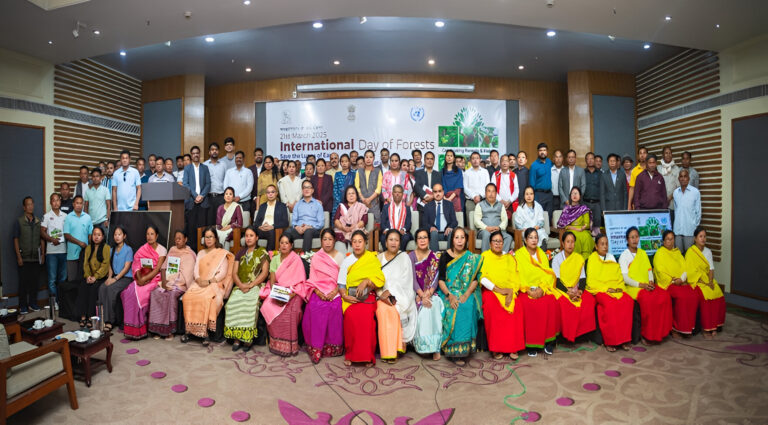Manipur IDPs demands return to home
Summary of the Issue:
The internally displaced persons (IDPs) in Manipur are grappling with immense challenges in their prolonged stay at relief camps following ethnic violence that erupted in May 2023. These displaced individuals, predominantly from violence-stricken communities, have staged protests to demand their right to return to their homes. Living conditions in the camps are dire, with overcrowding, poor sanitation, and limited resources exacerbating their suffering. Both state and central governments have been urged to take immediate steps to resolve the crisis and restore peace, enabling safe resettlement
The Struggle of Manipur’s Internally Displaced Persons: A Crisis in Their Own Land
Understanding the Conflict and Displacement
Manipur, a northeastern state of India, has been a battleground of ethnic tensions, leaving behind a trail of destruction, displacement, and despair. Since the violent clashes began in May 2023, around 40,000 people have been uprooted from their homes. Relief camps set up across districts like Imphal and Kangpokpi became makeshift shelters for those fleeing violence.
But these camps, meant to offer safety, have turned into hubs of misery. Overcrowded spaces, inadequate resources, and a lack of basic necessities define life for the displaced. The IDPs often recount tales of traumatic escapes, witnessing violence, and losing family members. For these communities, the notion of “home” now feels like a distant dream
The Humanitarian Crisis in Relief Camps
Living in relief camps isn’t easy. While aid from citizen groups and non-governmental organizations offers temporary relief, systemic issues remain unresolved. Here’s what life in these camps looks like:
- Health and Sanitation Issues:
Poor sanitation has led to outbreaks of diseases, while access to clean water is minimal. Overcrowding worsens hygiene concerns, particularly for women and children. Mental health issues, especially among children who’ve witnessed atrocities, are another critical concern - Scarce Resources:
Donations of food and clothes trickle in sporadically, but they cannot sustain the growing population of displaced individuals. A pregnant woman giving birth in a relief camp, with minimal medical support, highlighted the lack of healthcare services - Education and Employment:
Children have limited access to education, leaving their futures uncertain. Displaced adults, stripped of livelihoods, remain dependent on aid
Demands and Protests: A Cry for Justice
Protests organized by community groups like the Apunba Awonba Manipur Amagidamak (AAMA) have drawn attention to the plight of the displaced. Their key demands include:
- Immediate action to ensure their safe return.
- Restoring law and order in violence-affected regions.
- Sustainable rehabilitation and resettlement plans
During a recent protest, displaced individuals emphasized the emotional and physical toll of prolonged displacement, questioning when they could return to their ancestral lands.
Government Efforts and Limitations
Both the state and central governments have initiated relief measures, but these efforts are often criticized as insufficient:
- Relief Funds:
Over ₹101 crore was sanctioned for relief efforts, but concerns about mismanagement and inefficiency loom large. - Lack of Comprehensive Plans:
Critics argue that the authorities need a structured approach, involving organizations like the Indian Red Cross, to ensure efficient delivery of aid and rehabilitation
Moving Forward: What Needs to Be Done?
The road to recovery for Manipur’s IDPs requires a multi-faceted approach:
- Immediate Humanitarian Aid:
Ensuring adequate food, clean water, medical facilities, and psychological support is vital. - Community Dialogues:
Engaging leaders from conflicting groups to foster reconciliation is crucial for lasting peace. - Infrastructure Development:
Rebuilding homes and schools in affected areas should be prioritized, along with ensuring security for returning families. - Government Accountability:
Transparency in fund allocation and relief work can restore faith among the displaced and the general public.
FAQs
1. What triggered the displacement crisis in Manipur?
Ethnic violence that erupted in May 2023 displaced thousands, forcing them to flee their homes.
2. How many people are currently in relief camps?
Approximately 40,000 people remain in camps across the state.
3. What are the main challenges faced by IDPs in the camps?
Overcrowding, poor sanitation, lack of healthcare, and limited access to education are significant issues.
4. Are there any efforts to resettle the displaced?
While funds have been allocated and discussions initiated, tangible progress in resettlement remains slow.
5. What can individuals do to help?
Donations to trusted organizations and advocating for the rights of IDPs can contribute to relief efforts.


